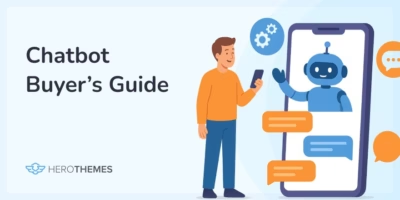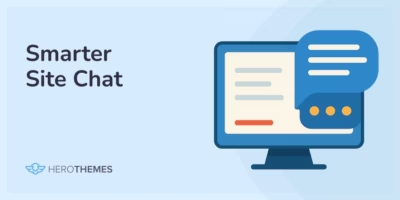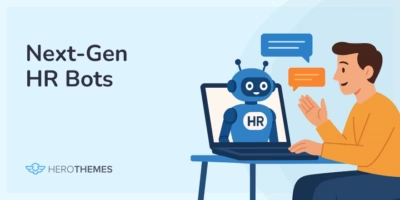B2B Customer Service: What It Is, Why It Matters and How to Get It Right
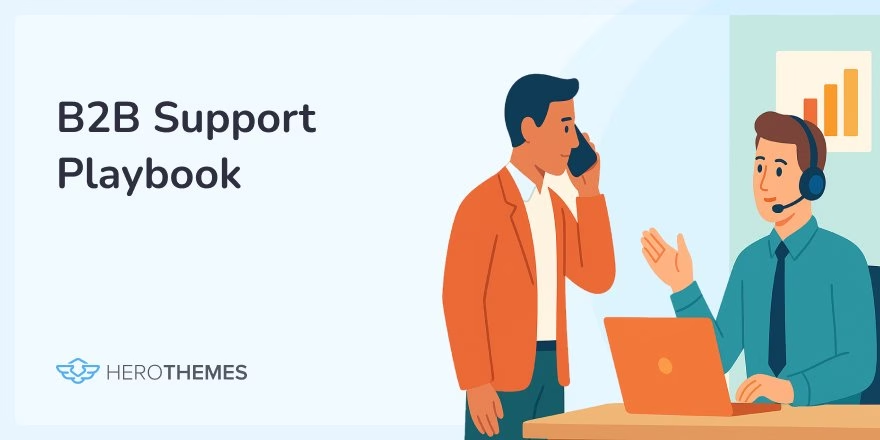
B2B Customer service means providing support to other businesses (your clients) in a way that keeps them satisfied, successful, and loyal. It’s not just about fixing issues; it’s about building long-term partnerships.
In my experience running support teams, I’ve seen how good B2B service can turn clients into enthusiastic partners. When you’re serving businesses, the stakes are high—a single unresolved issue can ripple through a whole company.
In this guide, I’ll break down what B2B customer service is, how it differs from B2C, and how to get it right with examples, best practices and actionable insights.
Let’s get started on delivering service that truly stands out.
In This Guide

We rigorously test and research every product that we recommend through HeroThemes. Our review process. We may also earn a commission if you make a purchase through our links.
What Exactly Is B2B Customer Service?
Business-to-business (B2B) customer service refers to all the support interactions between a company and its business clients, from the sales journey onward.
Unlike serving individual consumers, B2B service often involves complex needs and multiple touchpoints. You’re not just troubleshooting a product for one person, you’re helping a client company achieve its goals.
For example, a B2B software provider might assist a client’s entire team in using a platform effectively, handle contract renewals, and provide custom solutions over years.
B2B customers typically depend on their vendors. If you’re providing a crucial service (say, payment processing or cloud hosting), your support helps protect your client’s revenue and operations.
Think of it this way: when Slack (a B2B communication tool) has an outage, it’s not just an annoyance – it can halt internal communication for many companies until support fixes it.
In B2B relationships, a “quick question” might involve detailed technical guidance or coordinating with a client’s IT department.
Now, before we get into strategies, let’s clear up how B2B vs B2C customer service differ, because they really are different beasts.
B2B vs B2C Customer Service: Key Differences
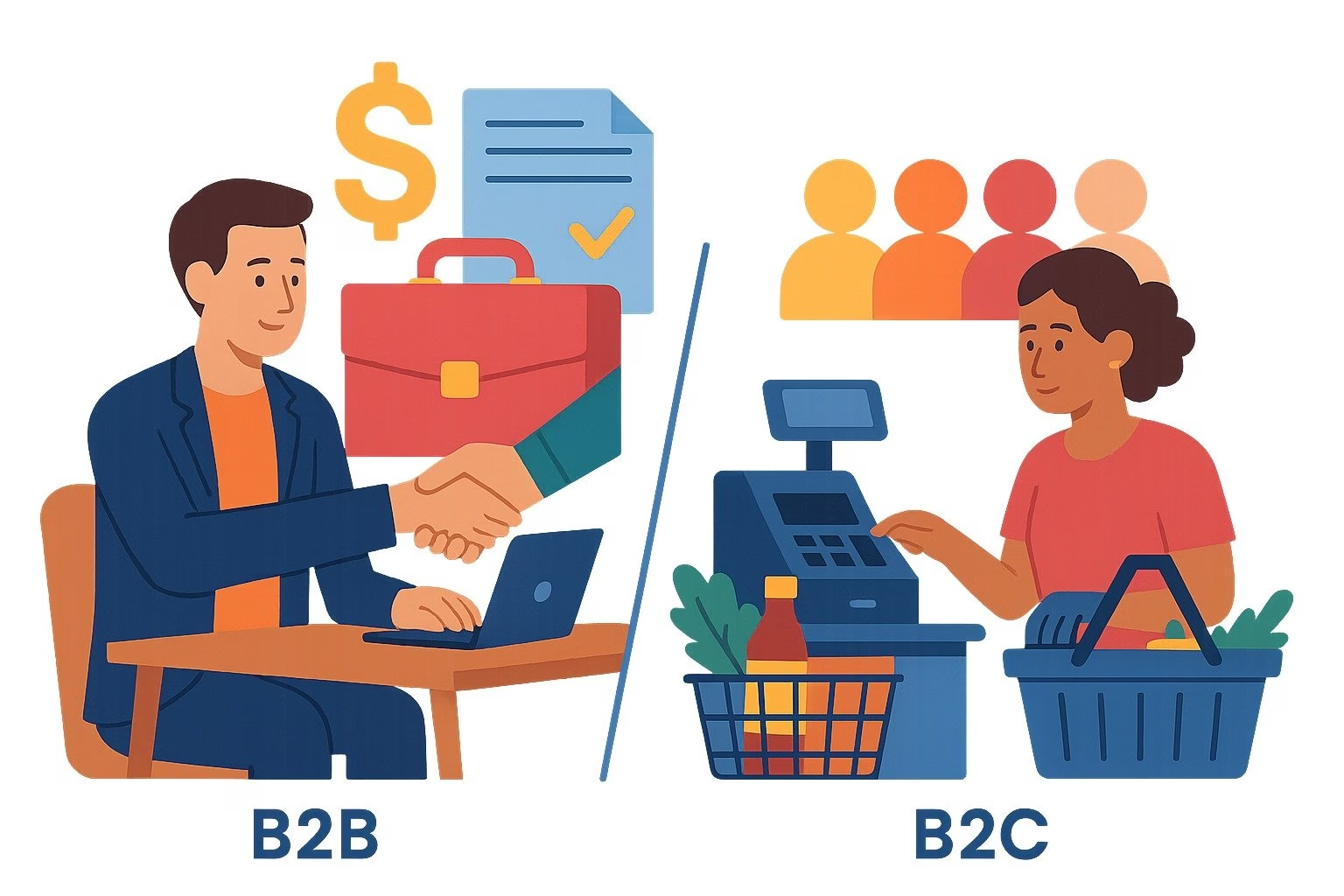
Serving businesses is a whole different game from serving retail consumers. Here are the biggest differences I’ve seen (and you’ll likely relate if you’ve done both):
| Aspect | B2B Customer Service | B2C Customer Service |
|---|---|---|
| Full Form | Business-to-Business | Business-to-Consumer |
| Relationship | Long-term, personal, account-focused | One-time or short, fast interactions |
| Clients | Few, high-value clients | Many, low-value customers |
| Issue Complexity | Complex, technical, multi-team involvement | Simple, common issues like refunds or login help |
| Communication | Formal: calls, emails, meetings | Quick: chat, phone, social media |
| Expectations | Custom service with SLAs | Fast, friendly help, no formal guarantees |
| Success Metrics | Retention, renewals, business impact | Speed and customer satisfaction |
| Urgency Example | Major coordination with client teams during big issues | Quick fixes for individual user complaints |
- Relationship Depth: B2B customer service is usually relationship-driven and long-term. You might have dedicated account managers, recurring check-ins, and a deep understanding of each client’s industry. In contrast, B2C is more transactional, often one-off or short interactions focusing on immediate resolution.
- Client Value & Volume: In B2B, each client is high-value and the volume of clients is lower. You could have just 10 big clients generating substantial revenue each, so each one really matters. B2C deals with a high volume of customers where each individual purchase is smaller. This means a B2B support agent might know clients by name and context, while a B2C agent might handle a stream of anonymous one-time customers.
- Complexity of Issues: B2B issues tend to be more complex. They often require in-depth technical knowledge, multiple stakeholders (perhaps a customer’s IT and procurement teams), and adherence to formal agreements. B2C issues are usually simpler (password resets, refund requests, usage questions) and can be resolved faster with standard responses.
- Communication Channels: Both B2B and B2C use channels like email, phone, and chat, but B2B leans on more formal channels. You’ll see more scheduled calls, on-site visits, and detailed email threads in B2B, sometimes even in-person meetings for major accounts. B2C support more often involves quick chats, social media replies, or helpline calls, aiming for speed.
- Expectations and Agreements: B2B customers usually expect tailored service and guarantees. It’s common to have SLAs specifying response times and uptimes, and B2B clients will hold you to them. For instance, a B2B client might require a 2-hour response for critical issues. B2C has far less formal agreements (you won’t have an SLA for how fast your pizza place replies, right?), though consumers still expect courtesy and speed.
- Measures of Success: In B2C, success might be customer satisfaction scores and how quickly you solve each ticket. A B2B support team’s success is often measured by partnership health – are the clients achieving ROI, and will they stick with us?. In other words, B2B support isn’t just fixing problems, it’s proving your product’s value continuously.
One way to illustrate this difference: imagine a server outage hits a platform. The B2C support team deals with individual users complaining about a game lagging, they apologize and resolve it quickly.
The B2B support team, however, might be on the phone with a corporate client’s CTO, assembling engineers on a bridge call, and updating the client every 15 minutes, because that outage affects a big partner with 50,000 of their customers. The level of urgency and coordination is on another level.
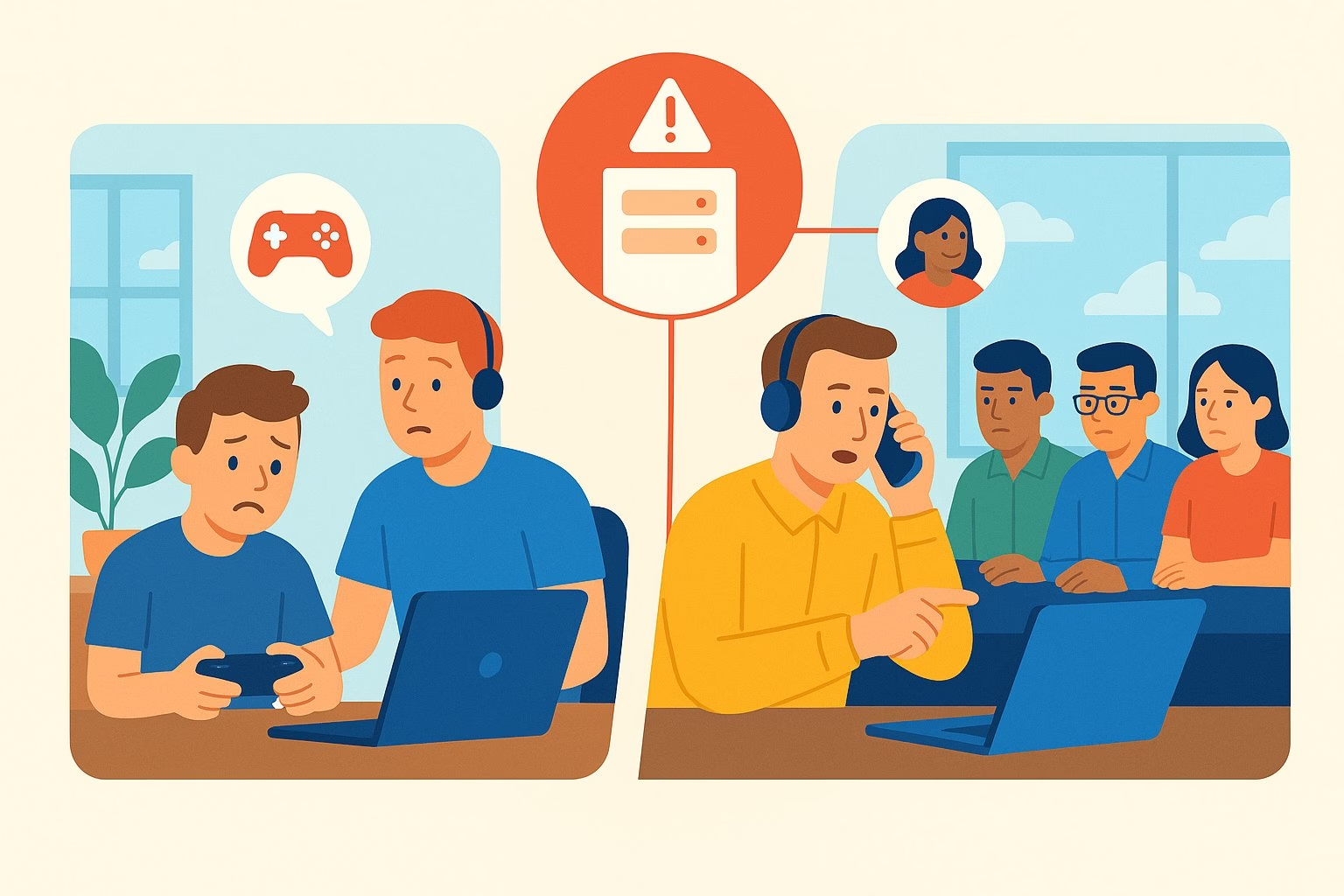
Understanding these differences helps set the stage for getting B2B service right.
Why Great B2B Customer Service Is So Important
If you’ve ever heard the phrase “customer service is the new marketing,” this rings especially true in B2B. The impact of good (or bad) service in B2B goes straight to the bottom line.
Don’t just take my word for it, the numbers speak loud and clear:
1. B2B clients reward good service with more business
Zendesk study found that 62%1 of B2B customers purchased more after a good customer service experience, compared to 42% of consumers.
Think about that: a majority of business buyers will expand their spend with you if you support them well.
I’ve seen this firsthand: we resolved a major issue for a client promptly, and they not only renewed their contract, but added new services the next quarter.
2. Customer experience drives B2B buying decisions
About 80%2 of B2B purchases are influenced by the customer’s experience (how well you support and engage them), whereas only 20% are influenced by price or the product itself.
That’s a stunning stat – it means the way you treat customers can matter four times more than what you’re selling or how much it costs.
3. Retention and loyalty are easier (and cheaper) than acquisition
B2B relationships often mean long sales cycles and high customer lifetime value. Keeping an existing client happy is gold.
It’s commonly said that retaining a customer is 5x cheaper than acquiring a new one.
Great service = higher retention. On the flip side, one major mess-up can lose a multi-year contract, which hurts a lot more than a lost casual consumer sale.
4. Reputation matters more in tight B2B circles
In many industries, B2B is a small world. If you consistently deliver poor support, word gets around – and you risk not just one customer but an entire network.
Conversely, stellar service can become a selling point that precedes you.
I’ve had new prospects tell me, “We heard from XYZ Corp that your support is amazing, and that’s why we reached out.”
5. B2B clients have their own customers to serve
This is key. When you deliver great service to a business client, you’re indirectly helping their customers too.
For example, if you’re a B2B e-commerce platform and you quickly fix a bug for a client’s website, that client avoids downtime for shoppers. They stay happy and their end-users stay happy.
B2B customer service has a multiplier effect. As HBR report noted, B2B buyers often prefer vendors who offer performance guarantees (82%3 would switch if guarantees aren’t offered), because their own customers rely on it.
6. Good service can justify premium pricing
Don’t underestimate this. Business customers will pay more for reliability and support. 86% of buyers are willing to pay more for a great customer experience according to PWC research4.
If your service is top-notch, you don’t have to race to the bottom on price. We’ve seen clients stick with us despite cheaper competitors knocking, because they trust our support.
To sum it up, great B2B service = happier clients, more revenue, and stronger partnerships, while bad service is a fast track to churn and a damaged reputation.
Types of B2B Customer Service (and Channels to Get it Done)
B2B customer service isn’t one-size-fits-all. It spans multiple channels and service types, and a winning strategy usually blends them.
Here are the main types of service you’ll provide in B2B, with some tips for each:
Self-Service Support
A hands-off approach where clients help themselves to answers. This runs 24/7 and can resolve a big chunk of common queries without an agent.
In B2B, a knowledge base or documentation portal is crucial. Busy professionals actually appreciate finding answers quickly on their own.
Provide FAQs, how-to guides, troubleshooting articles, and maybe even tutorial videos. Many B2B companies set up extensive documentation.
For example, cloud software providers often have entire libraries for administrators. A good knowledge base can deflect simple tickets.
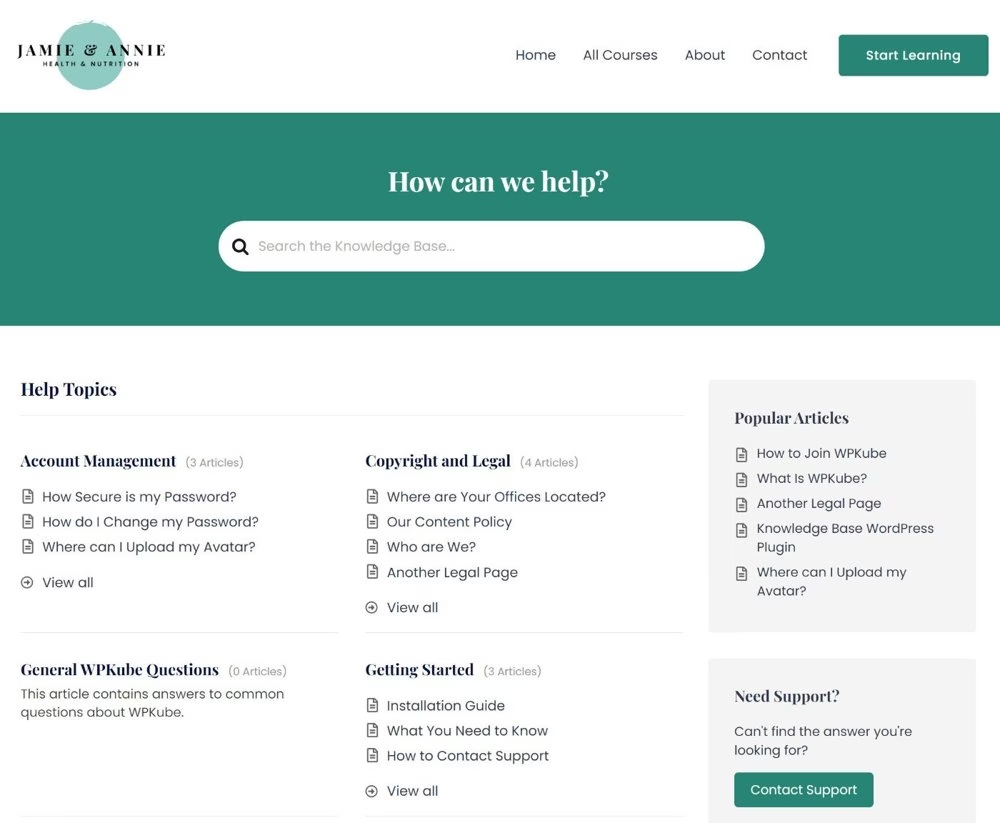
Heroic Knowledge Base is one of the highly recommended solutions for self-service.
With key features like:
- Advanced search bar and navigation
- Built-in analytics, reports and a feedback system
- ChatGPT based AI help assistance, that is trained on your knowledge base content
- User restriction features for internal and external knowledge base
- Setup wizard to get started within 5 minutes
Pro tip: consider adding a customer community or forum (this is a more advanced “self-service” where customers help each other, or share best practices). User communities can effectively crowdsource support and product tips, great for engagement if you can moderate it.
Live Human Support
This is your classic direct support, via email, phone, live chat, or on-site.
In B2B customer service, email and phone are heavily used, but live chat is emerging too for quick queries.
Live support handles the more complex issues or anything the self-service couldn’t answer. The key here is expertise and personalization.
When a B2B client reaches a live agent, they expect knowledgeable service that understands their account history. Metrics like first-response time and resolution time still matter here (no one likes waiting), but resolution quality is king.
Software like Heroic Inbox makes managing B2B customers easy with its collaboration and CRM features.
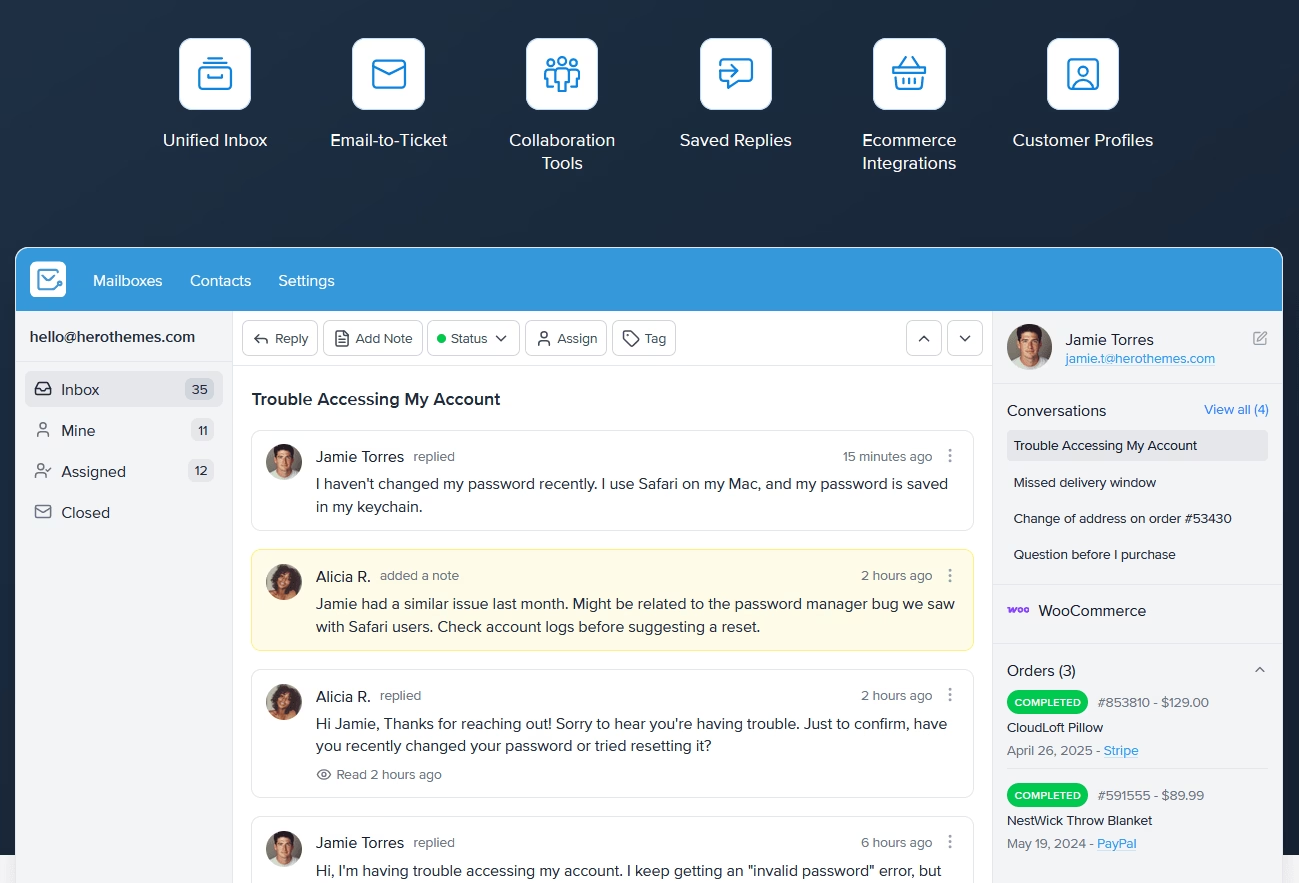
Make sure your support team has a strong internal knowledge base or playbooks, when complex questions come, agents need quick access to technical info (like those tricky API error codes or custom contract terms).
Many B2B setups assign a Customer Success Manager or account rep to each client for continuity. This hybrid of support/success ensures the client always has a go-to person.
Proactive Support
Rather than waiting for the client to contact you, you reach out first or anticipate needs.
This can be considered a “type” of service on its own.
Examples: sending maintenance alerts (“We’ll be upgrading servers this weekend…”), usage tips (“We noticed you haven’t used feature X, here’s how it could help your business”), or even prompting re-orders before the client runs out of supplies.
Explore:
Best Email Subject Lines to Send on Weekends
Top 8 Alert Email Subject Lines for Cart and Stock Updates
B2B customers love proactive care because it shows you’re a partner, not just a vendor.
It might be as simple as a quarterly business review meeting to discuss how things are going, or as automated as a system that flags when a client’s usage dips (and then your team reaches out to check in).
Proactive chat messages in-app or personal b2b emails about upcoming changes also fall here. Essentially, solve problems before they know they have them, it’s a huge loyalty booster.
Onboarding and Training
When you sign a new B2B client, how you onboard them is part of customer service too.
Have an onboarding program: step-by-step help to get the client set up and using your product effectively. This might involve:
- One-on-one training sessions
- Webinars
- A guided setup wizard
The goal is to ensure the customer sees the value as early as possible. Well-onboarded customers are far less likely to run into issues or churn later.
I always recommend having a customer success plan for at least the first 90 days of a new B2B client – map out key milestones, check-in calls, and resources to share. It’s an investment that pays off in fewer support tickets and more educated users.
Multi-Channel (Omnichannel) Support
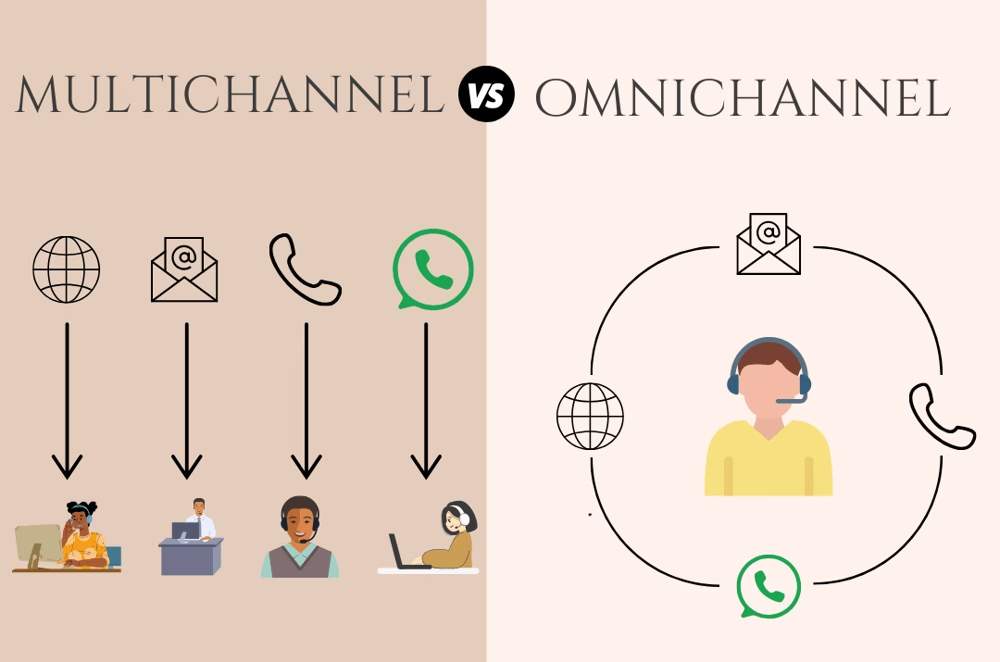
B2B clients might reach out in various ways. An email here, a LinkedIn message there, maybe a support portal ticket or even a WhatsApp text in some industries.
It’s important to meet them on their preferred channels and keep the experience consistent. Today’s expectation is a unified omnichannel experience: 90% of customers want consistent service across channels.
Tools like a shared inbox or helpdesk software (more on tools in a bit) can unify these communications.
The result: a smooth experience where, say, a client can open a ticket via email and later follow up by phone with the issue history already known to the agent.
Dedicated Support vs. Tiered Support
B2C customer support is usually tiered by complexity (front-line reps then escalate to specialists). B2B sometimes uses a dedicated team model, e.g. you have a small support team that exclusively handles certain key accounts, offering a white-glove service.
Alternatively, a tiered model might have Tier 1 handling general inquiries and Tier 2/3 dealing with complex technical issues for any client.
Both can work; many mid-sized B2B companies do a hybrid: CSMs handle relationship and simple issues, and technical specialists jump in for in-depth problems. The common factor is collaboration. Ensure your team communicates internally so the client gets answers without being bounced around.
Now, let’s get into the concrete best practices that you can implement. These are strategies and tips that apply across the board to elevate B2B customer service from good to outstanding.
7 Best Practices for B2B Customer Service Success
Outstanding B2B service doesn’t happen by accident. It’s built through smart strategies and daily habits in your support team. Based on experience (and plenty of trial and error), here are seven best practices I consider crucial:
1. Establish Clear Service Level Agreements (SLAs)
B2B customers often demand clarity on what support they’ll get. An SLA is essentially a contract that defines the level of service you promise: response times, resolution times, uptime, etc.
Make sure you set realistic SLAs and meet them.
For example, if your SLA says “critical issues responded to within 1 hour,” have an after-hours plan to make that true.
SLAs create trust by setting expectations. Importantly, monitor your performance: if you’re consistently missing an SLA, address it immediately (either improve processes or adjust the agreement).
Meeting SLAs can directly boost customer satisfaction and retention.
2. Leverage the Right Tools and Technology
You can’t effectively manage B2B support with just an email inbox and sticky notes. Invest in tools that streamline workflows.
A helpdesk or shared inbox system keeps all communication in one place and allows collaboration on tickets.
If your business runs on WordPress, you might use a helpdesk plugin like Heroic Inbox to manage customer emails and tickets right in your site’s dashboard. Pair that with a knowledge base platform like Heroic KB plugin so both your team and customers have quick access to information.

Automation is your friend too: use ticket routing, priority flags, and canned responses for common queries. Modern B2B teams are even deploying AI chatbots to handle simple inquiries or provide 24/7 coverage for FAQs.
Note: ensure any tool you adopt integrates with your others. A CRM that syncs with your helpdesk, for instance, so agents see customer profiles and purchase history alongside tickets.
3. Train and Empower Your Support Team
B2B support agents need a deep understanding of your product and the client’s context. Invest in training them on industry specifics, compliance regulations, and the client’s use cases.
For example, if you support financial software, your team should know basic finance terms and perhaps regulatory implications, such as crypto tax or even emerging investment areas like the best staking crypto options.
Training isn’t a one-time thing, make it continuous.
Also, encourage building soft skills: listening, empathy, and problem-solving. When complex issues arise, you want agents who feel confident digging in and owning the problem.
Empower them to make decisions (within reason) without always needing manager approval. Nothing is worse than “I escalated this, waiting for approval” when a client just wants a quick answer or a small exception.
A well-trained team can provide personalized, high-quality support that sets you apart.
Bottom line: your service is only as good as your people, so turn them into experts and give them the authority to shine.
4. Optimize Your Website and Support Channels for B2B
In many cases, the customer’s journey to get support starts on your website. Make it easy.
Have a clear “Support” or “Help Center” menu. Ensure your knowledge base is searchable and well-organized by topic.
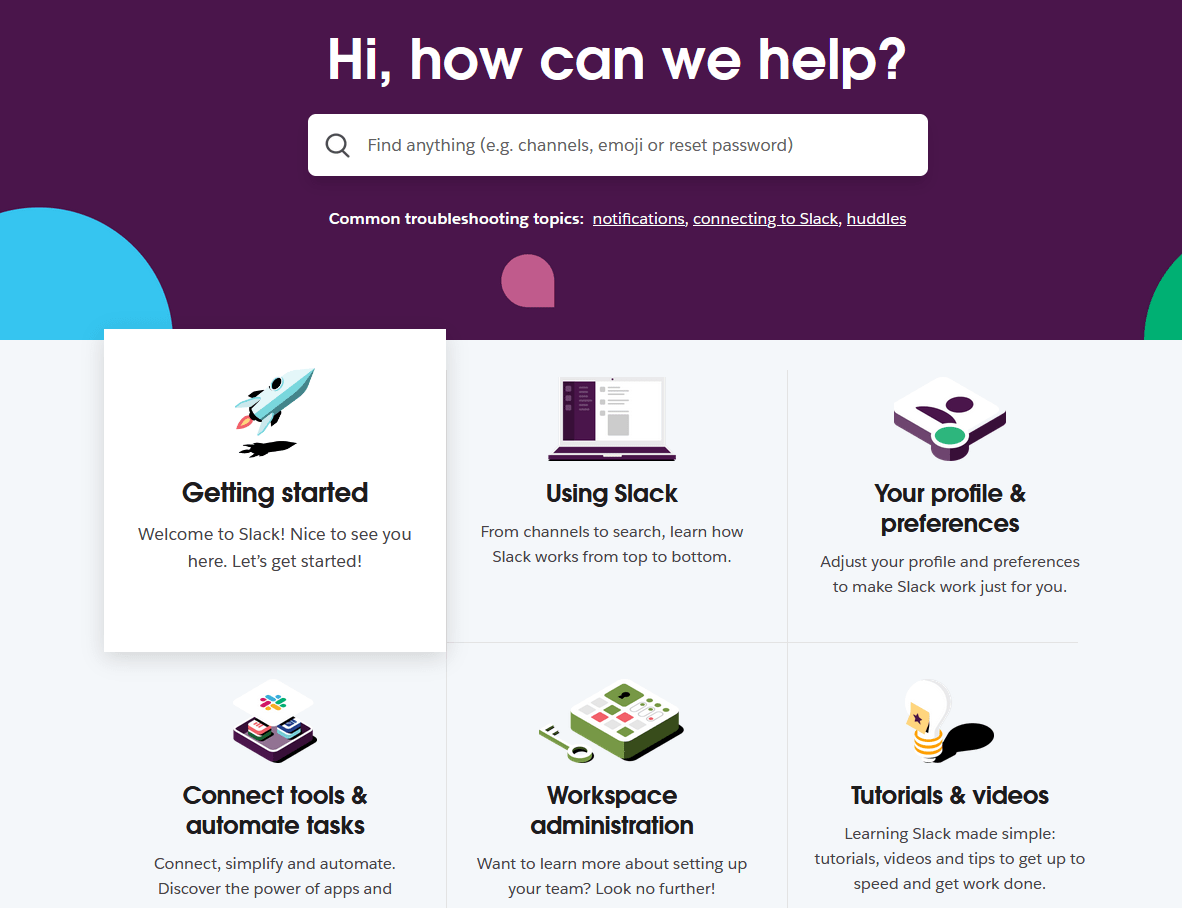
If you serve global or varied clients, consider a segmented portal or client login where they can see information tailored to them (like their account status, support tickets, etc.).
Many B2B companies also offer a client portal for things like order tracking or technical support requests.
You might integrate a portal where clients can log in to see all their support tickets in one place, this gives transparency and convenience.
Additionally, ensure your site is mobile-friendly; a busy manager might quickly look up your FAQ on their phone.
Tip: highlight your contact channels clearly. Don’t bury the support phone number or email. B2B clients often need to reach you urgently, so make that info prominent.
A well-optimized support site can even be a selling point. Prospective customers might check how robust your support resources are before buying. So make sure you have a clean, navigable support section that signals you care about customers.
5. Provide Fast and Multi-Channel Support
Speed still matters a lot, even in B2B. Yes, B2B issues can be complex, but quick response time is critical to show you’re on it.
Ideally, offer multiple ways to contact: email/ticket, phone for urgent issues, live chat for quick questions, maybe even messaging apps if your industry uses them. And respond within the promised timeframe (24 hours maximum for general queries is a good rule; many clients expect faster).
At minimum, acknowledge receipt of an issue quickly (so they’re not wondering if it got lost).
Prioritize post-sales support highly after the sale or implementation, clients want to know you’re still there for them. During a long-term contract, fast support can be the difference in whether they renew or walk.
Another aspect is 24/7 availability if your clients operate globally or round-the-clock. If you can’t staff 24/7 internally, consider an on-call rotation or outsourcing a tier-1 support team for nights and weekends.
Many B2B firms, especially in software/SaaS, have some around-the-clock support for critical issues because downtime can cost the client serious money (and cost you the client!).
Explore:
Complete Guide to Customer Service Outsourcing
Top 11 Customer Service Outsourcing Companies in the UK
6. Be Proactive: Anticipate Needs and Communicate
Don’t wait for problems to occur. Proactive customer service can mean sending regular account summaries, scheduling quarterly review meetings, or simply checking in with a client you haven’t heard from in a while (they might have an issue and just haven’t voiced it).
Here are some ways to offer proactive customer service:
- If you see a client hasn’t used a major feature, reach out to offer help (perhaps they didn’t realize its value).
- If you plan to change something (maintenance, new UI, pricing updates), inform clients early with personal messages. Maybe a tailored email about how the change benefits them.
- If you know a client’s busy season is coming, you might offer a tune-up or training session to ensure they’re ready (this prevents frantic support calls at the worst time).
- Another proactive tactic is reorder or renewal prompts: remind them a month before their contract renewal and discuss any concerns or upgrades, rather than waiting for them to remember.
B2B customers really appreciate when you help them avoid problems. It makes them feel like you’ve got their back.
Some companies even provide a proactive dashboard, a SaaS might give clients a status page or send alert emails if it detects the client’s usage is approaching a limit. This way the client fixes it before it becomes an issue.
Proactivity sets great B2B service apart, turning you from a reactive support agent into a trusted advisor for the client’s business.
7. Collect Feedback and Continuously Improve
Finally, never assume all is well, ask your customers and use data. Regularly gather feedback through surveys, follow-up emails, or during review calls.
Clients might be more reserved about giving feedback unless asked, but when you ask sincerely, they’ll tell you the truth.
Use targeted surveys (avoid super-generic ones); for example, after a support ticket is closed, send a brief survey asking if the resolution met their expectations. Or do an annual customer satisfaction survey covering various aspects of your service.
When you get feedback, act on it: if a client says your documentation is lacking, invest in beefing it up. If several clients request a new support channel (say, they all want a Slack channel for support), consider piloting it.
Analyze your support data: identify common issues and fix the root causes, track metrics like first contact resolution, and watch trends.
Maybe you find that 30% of tickets are “how do I” questions, that’s a sign you might improve onboarding or create better user guides.
Use analytics from your knowledge base too: see what clients search for and whether they find answers.
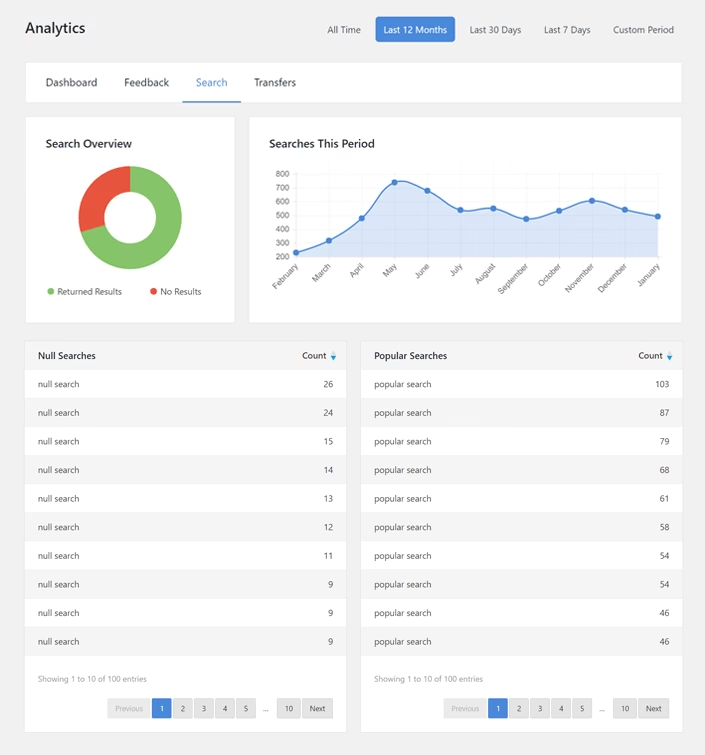
Remember, good B2B customer service is a team sport. It may involve your support agents, account managers, product engineers (for tough technical issues), and even sales (for managing expectations).
Encourage inter-department collaboration to solve customer issues. E.g. support feedback should loop into product development, maybe many customers are asking for a feature; if the product builds it, that’s service improvement too.
Before we wrap up, one more thought: customer-centric culture. The companies that truly excel in B2B service have a company-wide mindset that the customer’s success is our success. Empower your whole team to think that way, and clients will feel it in every interaction.
Final Thoughts
Customer service in B2B is more than just a helpdesk—it’s part of your value proposition.
When you do it right, you’re essentially offering partnership as a service. You help your customers achieve their goals, and in turn, they stick with you and even grow with you.
To recap a key point: B2B buyers have big expectations because their own success rides on your support. Meeting those expectations can yield big rewards. Higher loyalty, more sales, and a stellar reputation in your industry.
The importance of customer service in B2B cannot be overstated. It can literally be the differentiator that puts you ahead of a competitor with a similar product.
So, take these best practices and examples and think about your own support operations:
- Where can you make things easier for your clients?
- How can you respond faster, or add a personal touch?
- Are you using data to get better continuously?
- Perhaps start with one or two improvements. Say, launch a new knowledge base or set up a monthly client check-in program, and build from there.
Good luck, and here’s to turning every B2B customer interaction into an opportunity to strengthen your partnership and drive success for both sides! 🏆
Further Reading
Ecommerce Customer Service: 10 Best Practices
9 Best Customer Service Software for Any Business (2025 Guide)
AI in Customer Service: The Ultimate Guide for Support Teams (2025)
11 Best Remote Support Software for 2025 (Mostly Free)
Customer Service in Dropshipping: Best Practices, Tips, and Tools
14 Subject Lines for B2B Sales Emails: Examples and Best Practices


